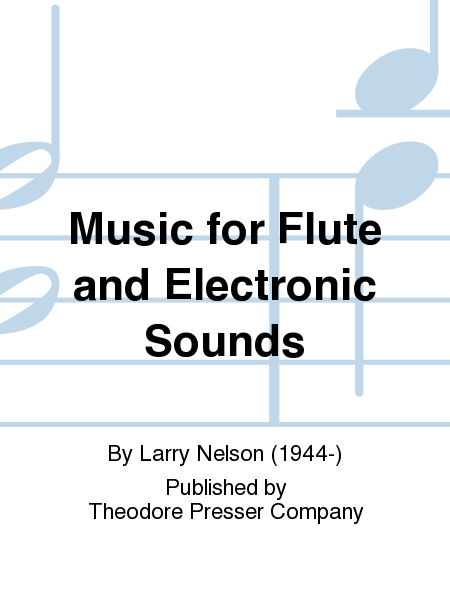Music For Flute And Electronic Sounds
-
Ships in 2 to 3 weeks
Details
Description
SKU: PR.114409570
Composed by Larry Nelson. Performance score. With Standard notation. Composed 1987. 11 pages. Duration 13 minutes. Theodore Presser Company #114-40957. Published by Theodore Presser Company (PR.114409570).UPC: 680160014330.
As the title suggests, "Music for Flute and Electronic Sounds" explores the relationships between the flute - lyrical, then percussive; sometimes sustained, other times in sweeping lines - and electronic sounds - sometimes pitched, sometimes more clangorous and bell-like. The individual electronic sounds were designed and built using editors that are now readily available for synthesizers. This made it possible to produce accompanimental sounds that support and blend with the articulation and timbre of the flute in a way that until recently was awkward to accomplish. In addition to the electroacoustic blending, the flute and electronic sounds also share compositional structure, both rhythmic and melodic. There are two musical ideas that are germinal to the pitch and structure of the work. The first is a four-pitch interval set (in two pairs) of descending minor third, intervening ascending major second, and concluding ascending major third. This gesture is presented at the outset. The second idea is a palindromic interval set which appears for the first time in measure 25. Formally, the work is in three parts. Part One is used to introduce several musical characters, most of which are generated from the materials just mentioned. Part Two consists of a juxtaposition of two of these characters. One is jazzy and is generated entirely by the synthesizers while the flute joins the electric sounds in a serene chorale. The flute additionally has the responsibility of interrupting the fast motion of the jazzy character so that the chorale can be heard. Part Three recalls the first part but also includes a cadenza, which uses the serene character of Part Two as basic material. After the cadenza there is a short section that again recalls the beginning. The work closes with a cadenza-like flourish.

 Share
Share